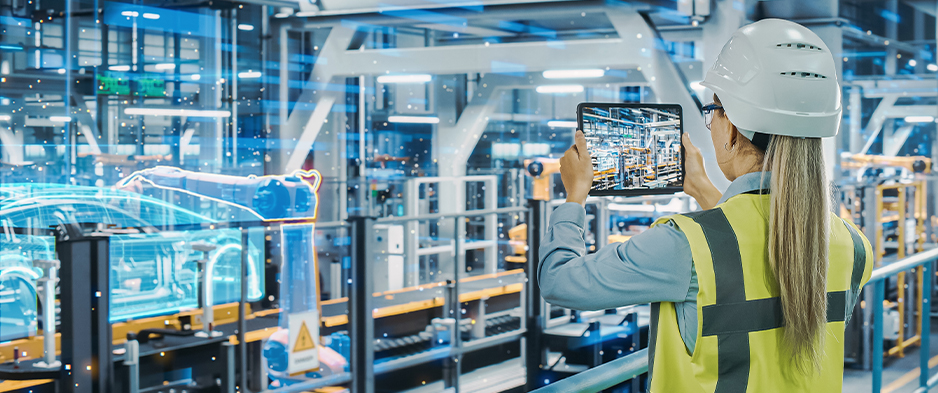Industrial design based on Virtual reality aims to streamline production processes, increase product quality, and improve safety standards. In Industry 4.0, virtual reality (VR) is identified as one of the key technologies for the future of the manufacturing sector. In particular, to implement a more sustainable, “light” and efficient production.
In this article we analyze the main benefits of virtual reality for industrial design.
Benefits of virtual reality for industrial design
1. Optimizes the design process
VR improves industrial design through more accurate representation of designs. VR devices ensure full freedom of movement throughout the process and thus enable smoother browsing and editing.
2. Reduces review time
Efficiency is key in the Smart Factory, including when it comes to time. VR reduces time spent on product design reviewing. Designers, manufacturers, and clients can scrutinize designs more meticulously and “touch” prototypes before they are created. This makes it easier for the actual quality of the product to match the rendered models. Which is crucial in industries and environments with no margin for error.
3. Makes industrial design more immersive
VR makes the design process more engaging. It creates a much more immersive experience than traditional simulation systems. With images and animations on flat screen displays, mouse and keyboard, users can hardly access an experience close to reality. Conversely, VR equipment transports the operator into an interactive dimension with which they can engage in a way that goes beyond a simple click on a computer mouse.
4. Allows for a holistic approach to design
The use of virtual reality in industrial design provides a clearer picture of the product in its actual context of use. Being able to view it holistically as it interacts with the real world offers tangible design benefits. In addition, it allows to evaluate conceptual alternatives for optimizing the functioning of the product in that context.
5. Makes training more effective
Virtual reality is useful for workplace training. It provides immersive, high-definition environments to help new employees and industrial designers become familiar with projects and how they work. It also allows educators to create a variety of real-life practice scenarios. This is particularly useful in high-risk environments and occupations.

